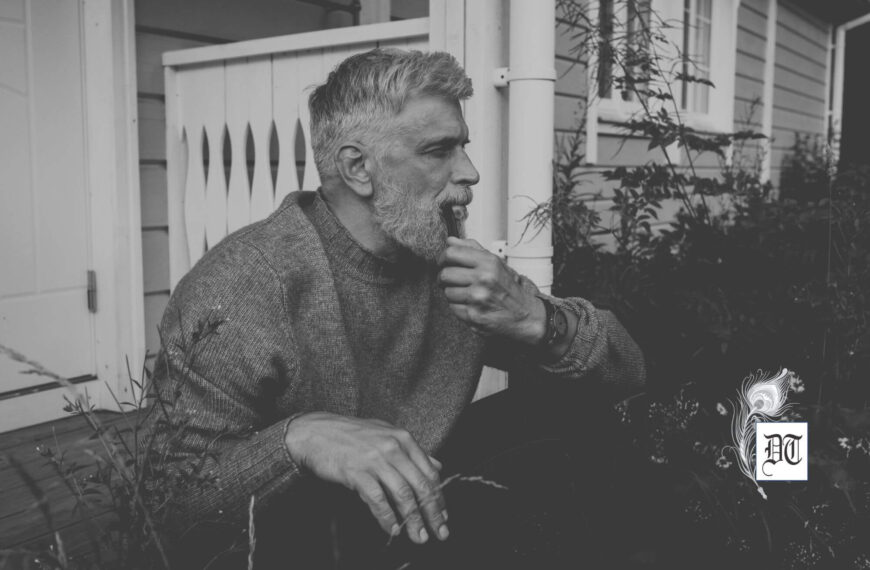In his over three-decade journey as a journalist, Arindam shows us the many faces of newsrooms in India, at the turn of the Millennium. It’s about the glimpses of life both inside and outside the newsrooms. He calls this series, ‘The Life of a Reporter’. Insightful, humorous, serious or sad, there are many shades and hues in the lives of reporters that never see the light of the day. Here’s a firsthand account from an insider.
The year was 1983. I was part of the launch team of a newspaper, Free Press Journal, Indore. I had been ‘imported’ from Bombay (it wasn’t Mumbai then). I met three guys from Lucknow.
All of us were bachelors. We rented a large apartment and stayed together. A boisterous group, we worked hard and partied harder. For lunch, we went across to the small Udupi restaurant that was bang opposite our office.
The modest eatery was managed by two brothers, Keshavan and Krishnan (names changed). They took turns to manage the business. One of them went to the native place. However, there was an overlap of seven to 10 days, possibly for handing over and taking over the charge of their small enterprise.
These two brothers were opposites in every-which-way. They looked like characters out of RK Lakshman’s sketches. Keshavan, the elder of the two, was somber and a quiet person, while Krishnan was jovial and talkative. Keshavan was a devout, Krishnan was an agnostic.
While Krishnan was away, Keshavan installed a larger than life portrait of Hanuman, the monkey-god. He also spruced up the small shrine in the corner of the restaurant. He offered flowers and sweets to the gods. He lit lamps and incense too.
One afternoon, Keshavan left for his native place. Knowing Krishnan, I asked him, in Hindi, “Aap puja karega kya,” (will you worship) pointing at the large portrait of Hanuman. He slapped his forehead and cursed his elder brother. “Wo ekdum pagal hai. Kya honga itna jyada puja kar k?” (He is crazy. What’s the use of such elaborate worship?) Krishnan had just kept the water glasses and was about to bring the plastic wrapped, much-thumbed menu card. He suddenly stopped in his track, took a sharp u-turn and rushed to us.
He shocked us by saying, “Ram ko buddhi nahi tha. Khali-pili ladai kiya.” (Ram lacked intelligence.  Uselessly he waged war). One of us asked, “Kya krana chahiye tha?” (What should he have done?).
Uselessly he waged war). One of us asked, “Kya krana chahiye tha?” (What should he have done?).
Krishnan had his interpretation of the Ramayana. Though none of us agreed to his theory, it wasn’t possible for us to rubbish it either. Let me put a small disclaimer here. Ramayana has been retold million, zillion times. Let us critique Ramayana more as literature, not faith or religion.
Krishnan said, “Ravan ko kya mangta tha. Lakshman ne uska behen ka naak kaat diya. Uska shadi kaisa hoga? Ravan ka insult bhi huela tha. Ram ko mangta tha band-geend baja k Hanuman aur Surpanakha ka shadi karta. Uska naak nahi tha, iska bhi chehra dent huela tha. Achha Jodi hota.” (What did Ravan want?. Lakshman had chopped off the nose of his sister. How was he to marry her off? She had no nose, his face had dent too. Ram should have arranged for a band party and married them off in grandeur. They would have made a good couple).
Krishnan went on to explain that the matrimonial alliance would have been a win-win situation. War was bad diplomacy. Both kings would have gained power.
Though we were in splits, we were amazed at his mature understanding of politics and diplomacy.
Seeing us enjoying his discourse, Krishnan added, “Ravan ka character achha tha. Usne Sita ko ‘pending file’ rakha. Koi ‘action’ nahi liya. Ram ko samajh mey nahi aaya. Ladai kiya. Sita ko laya aur usko bhi chhor diya. Sita bhi sochta hoga, baad mey, ki wo udhar rah jata tho thik tha.” (Ravan had a good character. He treated Sita as ‘pending file’. He took no ‘action’. He won Sita and then abandoned her. Perhaps Sita might have thought, later on, that she should have stayed back there).
 We enjoyed Krishnan’s interpretation. I interjected. I cautioned him that some
We enjoyed Krishnan’s interpretation. I interjected. I cautioned him that some  Hindus won’t like his story. They may be ‘garam’ (hot headed).
Hindus won’t like his story. They may be ‘garam’ (hot headed).
His eyes had a naughty twinkle. He rolled his eyes and said, “Janta hai. Gaon gaya na, udhar jaldi ghar aao toh khana garam, bibi thanda; der se aao, khana thanda, bibi garam.” (I know. I was in my native place, if I returned home early, food was hot, wife cold; if I returned late, food was cold, wife hot).
All of us laughed aloud with Krishnan. His wit sparkled like gem.
Krishnan certainly offered us much more than afternoon lunches, at Indore. When I was leaving Indore, in five months, to join Times of India, Bombay, I was sad that I would never meet him again. But, Krishnan is vibrant and alive within me!
Pix from Net


 By
By

 By
By
 By
By
Another delightful chararacter plucked from the pages of your past. Loved it!
Thanks, Joyce.
Good story! But I am not sure if in an age of swayam-var, when women chose their own husband, after having flown all the way from Lanka, Surpanakha might have settled for Hanuman!
Unfortunately, she wished for Ram and when told he had a wife, she proposed to Lakshman. Hot headed, he chopped off her nose. Hanuman was nowhere in the scene then.
Interesting take, Bhaswati. Who knows…
Thoroughly enjoyed!
Thanks a lot, Madhumita
Super read!Enjoyed it totally!
Many many thanks, Tejal
an interesting read for sure, but Krishnan is smart, definitely questioned the mythology characters Hindus Idolize, true is n’t it?we make some characters very noble and godly, and Shurpanaka an evil person, this part of the story does not sit well, she was very forward in asking the hand of the man she liked, there was nothing wrong with that approach, does not have to get such a punishment, in the same way Sita’s suffering even after returning from exile to be some kind of fate, mostly sad, In keeping it a part of the religious texts we have kept many a masses to keep women more husband centric and subdued, ( even today) the stories we spin can change the society, may be they need to rewritten.
Am sorry that I saw your comment today, exactly three years later. I agree with you, Katya, we need to rewrite and retell our stories. Krishnan is just a case in point.